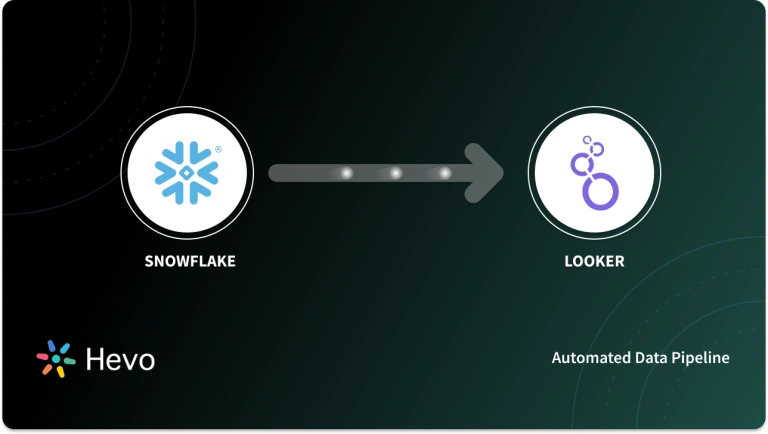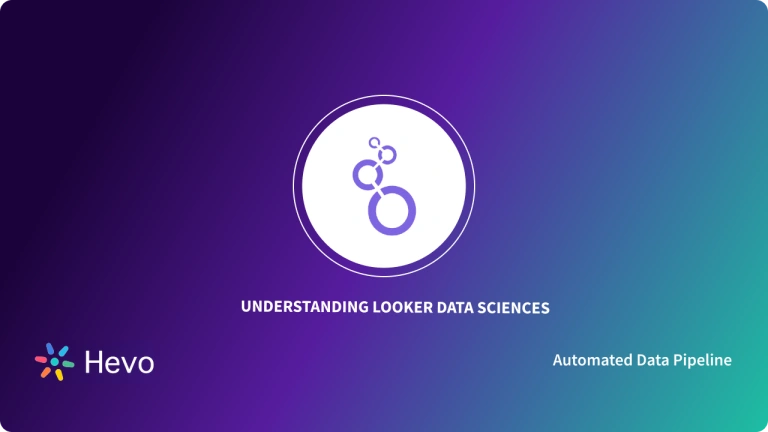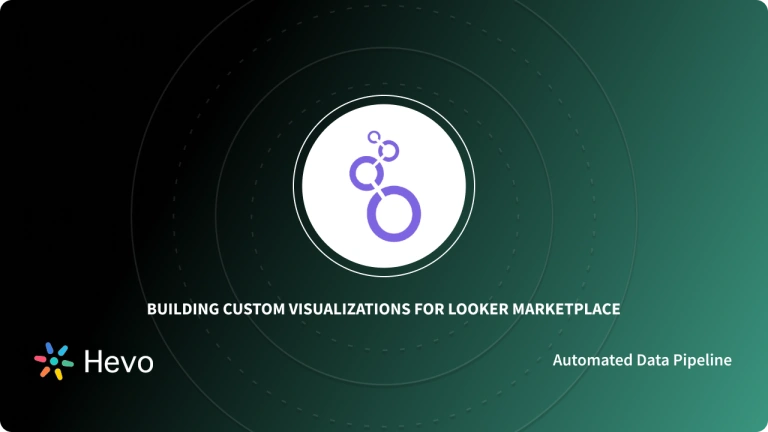Having the right visualization platform can help your business grow as making the right decisions becomes easier due to appropriate insights derived from what you see.
- Google Looker is one of the key Business Intelligence tools in the marketplace that can be leveraged to improve the efficiency of operations and steer business growth.
- This blog post aims at introducing you to a veritable visualization tool known as Google Looker that allows you to create fascinating dashboards which can be shared across your organization to quickly gain insights from your datasets through the efficient analysis that the use of Google Looker guarantees you.
Table of Contents
What is Google Looker?
Looker Data Sciences Incorporated is a computer software company that was founded in the United States of America with its headquarters in Santa Cruz, California. It was started in January 2012 by Lloyd Tabb and Ben Porterfield and was acquired by Google in 2019 making it part of the Google Cloud Platform.
Key Features of Google Looker
The key features of Looker are as follows:
- Create Custom Applications: Users can build custom applications to provide tailored visualization experiences to different organizations according to their needs.
- Support for Advanced Integrations: Platforms like Google BigQuery, Snowflake, AWS Redshift along with 50+ SQL dialects are supported using various Connectors and Integrations.
- Latest BI Tools: Robust support for creating Real-Time Dashboards is provided and support for the latest Business Intelligence tools is present to improve reporting.
- Support for Advanced Hosting: To ensure data reliability and safety, multiple Cloud-based platforms including Google Cloud Platform (GCP), and Amazon Web Services(AWS) are supported.
- Looker ML Functionality: This feature is also known as LookML and is used to describe the measures and dimensions of all the projects stored and being analyzed on Looker.
Hevo helps you migrate your data from multiple sources to a single destination, creating a single source of truth. Easily make your data analysis ready for your data visualization.
Hevo helps you with:
- Seamless Integration: Consolidate data from multiple sources into one destination.
- Single Source of Truth: Ensure accurate and consistent data for your analysis.
- Analysis-Ready Data: Transform and prepare your data for immediate use.
Experience hassle-free data migration with Hevo. Explore Hevo’s capabilities with a free personalized demo and see how you can benefit.
Get Started with Hevo for FreeWhen or When not to Use Google Looker?
Use Cases of Looker
When you are in need of customized visuals, a single source of truth, the best customer support, and collaborative dashboards, you can choose Looker. Since it’s completely browser-based, it reduces the possible confusion of your team. The pricing customization option will help you to get the necessary options alone for your company’s analytics goals.
Alternatives of Looker
In case you are already a Microsoft ecosystem user, Power BI you suitable option. Using another tool will lead to unwanted confusion and leads to additional costs. For an additional intuitive platform, you can choose tableau over Looker.
What is LookML?
LookML is a lightweight programming language used by Looker for the description of dimensions, aggregates, calculations, and showing data relations in a SQL database. It does this by constructing SQL queries against a particular database.
A typical LookML project will consist of a model, view, and dashboard files that are controlled via a git repository. Information about the tables to be used and how they are to be joined is found on the model files while the view files hold information about how to calculate data about each table or multiple tables.
LookML is very insightful and easy as it does all of this by separating structures from content making the query structure independent of the query content, therefore, focusing only on the content needed and not the complexities of the SQL structure. Below is a code sample of a LookML project showing a store that has a model file and two view files.
######################################
# FILE: ecommercestore.model.lkml #
# Define the explores and join logic #
######################################
connection: order_database
include: "*.view.lkml"
explore: orders {
join: customers {
sql_on: ${orders.customer_id} = ${customers.id} ;;
}
}
##########################################################
# FILE: orders.view.lkml #
# Define the dimensions and measures for the ORDERS view #
##########################################################
view: orders {
dimension: id {
primary_key: yes
type: number
sql: ${TABLE}.id ;;
}
dimension: customer_id { # field: orders.customer_id
sql: ${TABLE}.customer_id ;;
}
dimension: amount { # field: orders.amount
type: number
value_format: "0.00"
sql: ${TABLE}.amount ;;
}
dimension_group: created { # generates fields:
type: time # orders.created_time, orders.created_date
timeframes: [time, date, week, month] # orders.created_week, orders.created_month
sql: ${TABLE}.created_at ;;
}
measure: count { # field: orders.count
type: count # creates a sql COUNT(*)
drill_fields: [drill_set*] # list of fields to show when someone clicks 'ORDERS Count'
}
measure: total_amount {
type: sum
sql: ${amount} ;;
}
set: drill_set {
fields: [id, created_time, customers.name, amount]
}
}
#############################################################
# FILE: customers.view.lkml #
# Define the dimensions and measures for the CUSTOMERS view #
#############################################################
view: customers {
dimension: id {
primary_key: yes
type: number
sql: ${TABLE}.id ;;
}
dimension: city { # field: customers.city
sql: ${TABLE}.city ;;
}
dimension: state { # field: customers.state
sql: ${TABLE}.state ;;
}
dimension: name {
sql: CONCAT(${TABLE}.firstname, " ", ${TABLE}.lastname) ;;
}
measure: count { # field: customers.count
type: count # creates a sql COUNT(*)
drill_fields: [drill_set*] # fields to show when someone clicks 'CUSTOMERS Count'
}
set: drill_set { # set: customers.drill_set
fields: [id, state, orders.count] # list of fields to show when someone clicks 'CUSTOMERS Count'Understanding SQL Generation with Google Looker
Looker formulates SQL queries based on a LookML project that describes the relationship that exists between tables and columns in a database, it generates the SQL queries and then submits them against a database connection. In LookML, every parameter has a level of control of how Looker generates SQL, by altering the structure, its contents, or behavior of the query. Below is an example of a generated SQL statement on Looker.
SELECT
<dimension>, <dimension>, …
<measure>, <measure>, …
FROM <explore>
LEFT JOIN <view> ON …
LEFT JOIN <view> ON …
WHERE (<dimension_filter_expression>) AND (<dimension_filter_expression>) AND …
GROUP BY <dimension>, <dimension>, <dimension>, …
HAVING <measure_filter_expression> AND <measure_filter_expression> AND …
ORDER BY <dimension> | <measure>
LIMIT <limit>What are the Components of a Google Looker Query?
Looker queries comprise fundamental parameters that are applied to a LookML project to generate a complete SQL query, these parameters are the elements a user will use when building a query on the Looker Explore page and they consist of the following:
| Parameter | Description |
| Model | Model files define explorers and their relationships with other views. |
| Explore | It is the starting point for a query, references views, and allows joining other views. |
| Fields | Represents dimensions, dimension groups, measures, filters, and parameters to be included in a query. These populate the SQL SELECT clause. |
| Filter | An advanced filter of SQL WHERE and HAVING clausesexpression applied to Looker queries. |
| Sort Order | Specifies the field to sort by and the sorting order, leveraging the SQL ORDER BY clause. |
| Join | Adds multiple views to a single Explore, enabling access to and comparison of fields from different views. |
| View | Represents a table of data, native to the database or derived through Looker. |
| Dashboard | Consists of groups of visualizations (elements) that define the dashboard’s overall outlook. |
What is the Google Looker API?
The looker API is a secured application programming interface that is used to manage Looker instances and retrieve data through the Looker data platform. Applications or automated scripts are written using Looker’s API to make provisions for new Looker user accounts, run queries, schedule reports, etc.
Looker instance’s API can be accessed through its API URL where you can specify an API path by entering it in the API Host URL field on the Admin>API page using either of the following formats:
https://<instance_name>.api.looker.com https://<instance_name>.api.<my_region>.looker.com https://<instance_name>.looker.com
What is Google Looker Pricing?
Looker will not disclose its pricing details publicly. It provides customized plans based on the number of users and deployment scale. Looker pricing is designed to fit businesses of all sizes.
What are the Alternatives for Google Looker?
Sisense
Sisense is a business intelligence and analytics platform that allows organizations to simplify complex data and convert it into actionable insights.
- Sisense is designed to be very easy to use, so even nontechnical users can create interactive dashboards and drive data-driven decisions very effectively.
- With robust capabilities in modeling, visualization, and embedding data, Sisense gives users the freedom to easily connect, analyze, and visualize data coming from many sources.
- It has high-speed processing via its proprietary in-chip technology, ensuring it can work with large datasets.
Tableau
Tableau is a modern Data Analytics and Business Intelligence platform.
- It comes with all the features needed for data extraction, data processing, and generating reports and dashboards.
- It is an easy-to-use tool. Hence, it offers a smooth experience to its users.
- Some of Its amazing features include real-time analytics, quick responsiveness, and interactive dashboards.
- It also offers simple yet appealing graphics/visualizations that you can use to present your data pictorially.
Power BI
Power BI is a business analysis tool from Microsoft that can be used as a cloud service or as a standalone on-premise installation.
- It lets users connect to various data sources and ask questions about the data through queries.
- It also lets users transform data into reports and dashboards to aid decision-making.
- Being an offering from Microsoft, Power BI offers tight integration to all the Microsoft ecosystem components like SQL Server, Microsoft Azure databases, etc.
Discover other data analysis tools in 2025 and find out for yourself which suits your use case.
Learn More:
Conclusion
To sum it up, Google Looker is the more versatile data analytics platform. Some of its advanced features are LookML, SQL generation, and API integration. Its ability to generate unique visualizations and scalable solutions makes it an extremely helpful tool for businesses operating data-driven models.
For alternatives, look at Sisense, Tableau, or even Power BI. The choice of the right solution depends on your organization’s budget, goals, and technical requirements. Additionally, for seamless data integration into warehouses that Looker supports, tools like Hevo can simplify data pipeline creation and ensure reliable data flow for analytics.
Want to take Hevo for a spin? SIGN UP and experience the feature-rich Hevo suite firsthand. You can also have a look at the unbeatable Hevo pricing that will help you choose the right plan for your business needs.
FAQs
1. What does Google Looker do?
Google Looker is a data analytics platform that enables businesses to explore, analyze, and visualize data. It provides tools for building custom dashboards, creating reports, and generating insights through SQL-based queries and LookML modeling.
2. Is Google Looker free?
No, Google Looker is not free. It follows a subscription-based pricing model, which varies based on factors like user count, data volume, and deployment requirements. Pricing details are available through direct consultation with the sales team.
3. What is Looker best for?
Looker is best for creating customized analytics workflows, scalable dashboards, and seamless integrations with modern data warehouses. It excels in organizations requiring advanced data modeling, SQL-based querying, and collaborative, real-time insights for data-driven decision-making.




